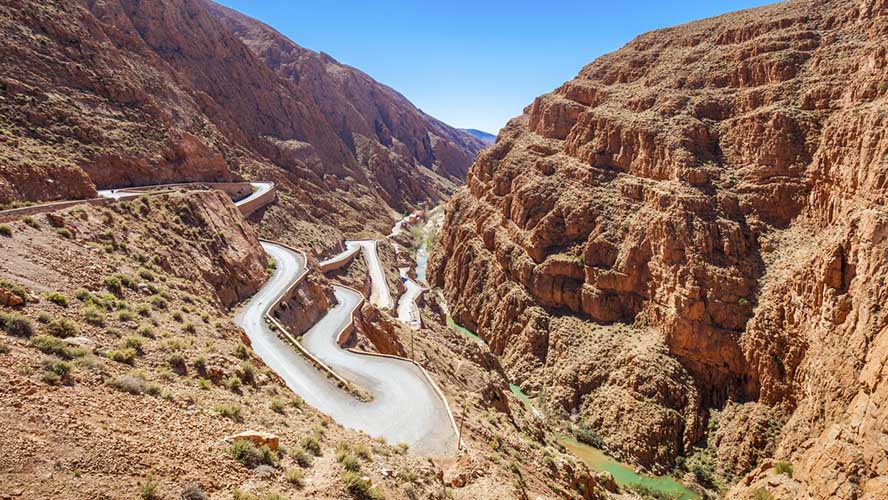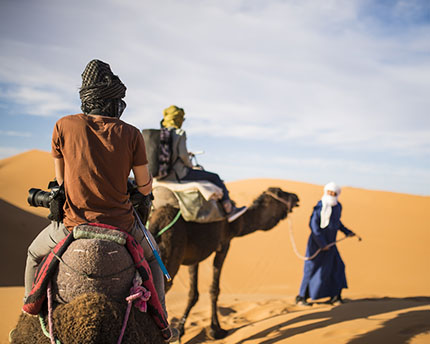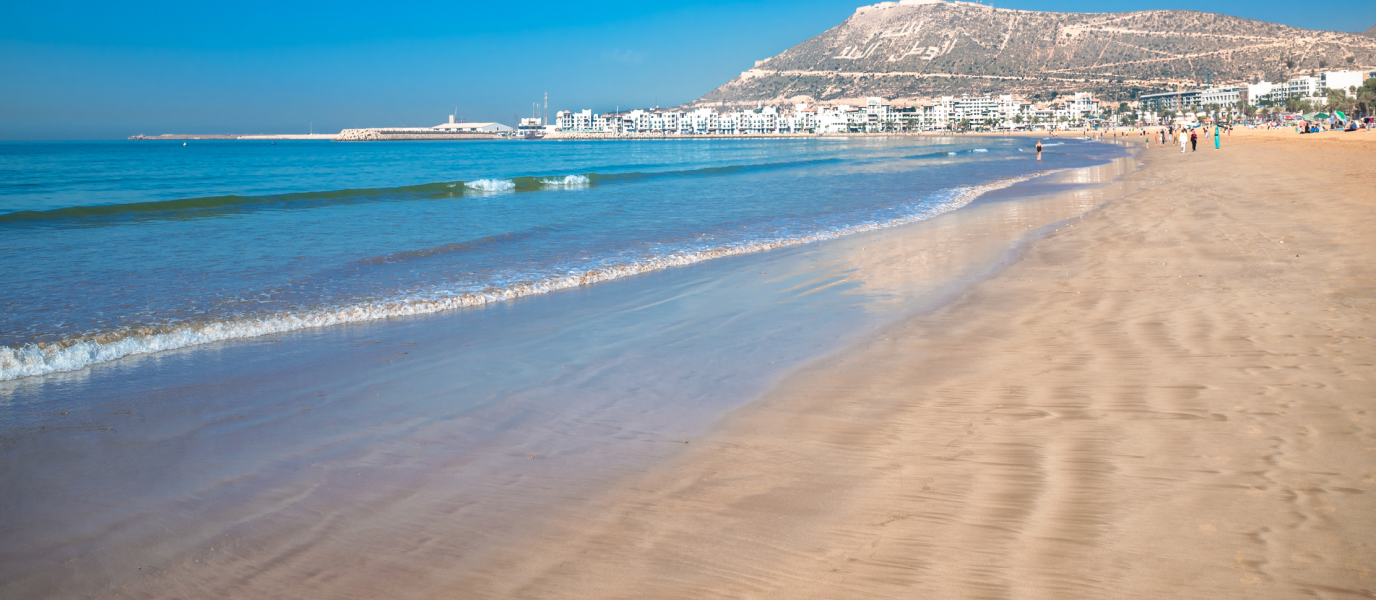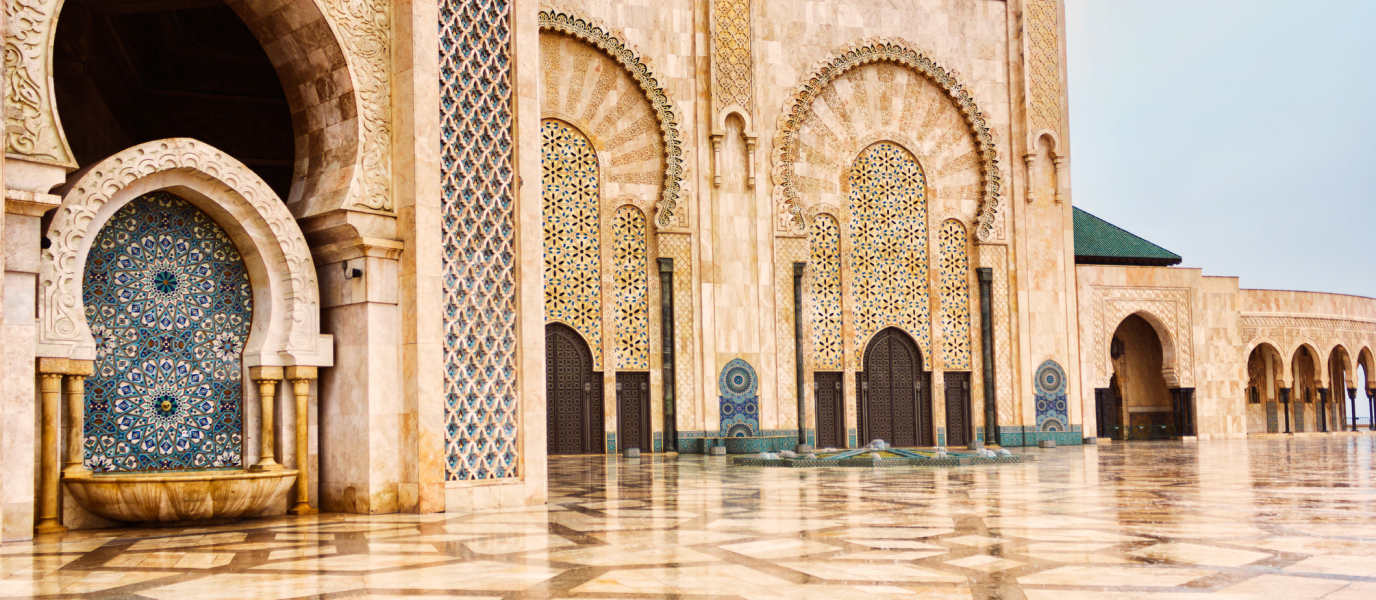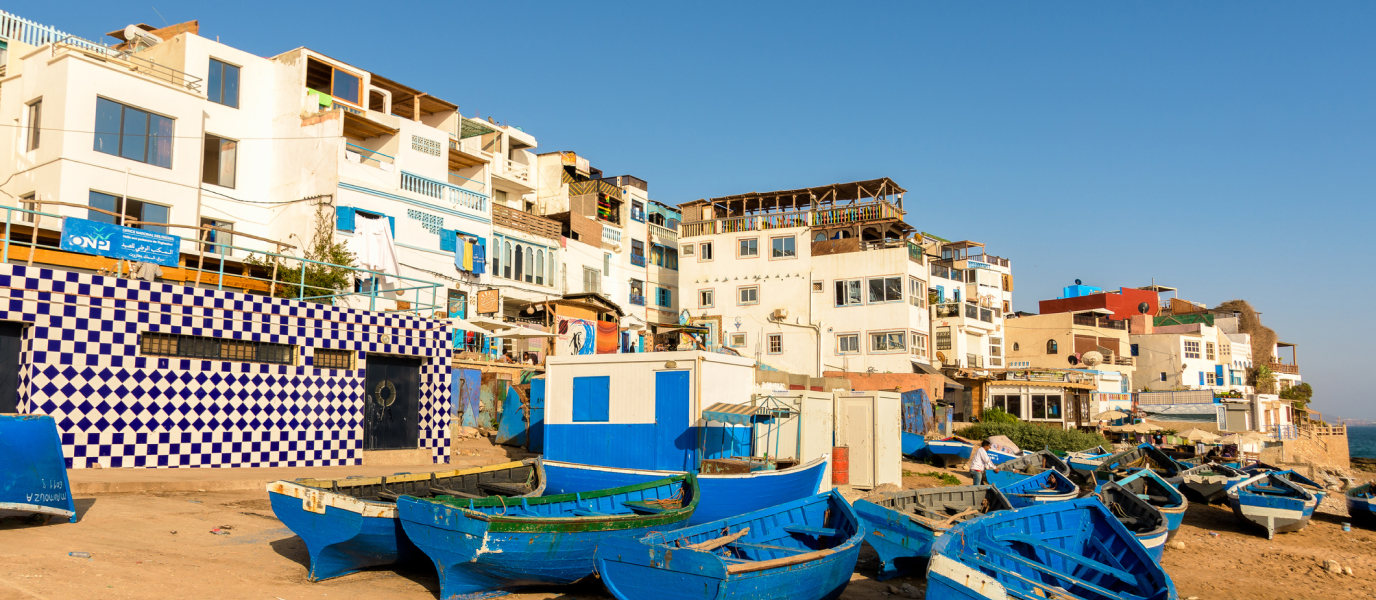Morocco is a surprising and magical country that never fails to impress visitors. It’s the closest African country to Europe and meeting point of the Mediterranean and Atlantic, with a varied landscape that changes dramatically from the Atlas Mountains to the Sahara Desert. Morocco is home to cities with medinas that captivate visitors, surprising nature and a rich heritage. This post is an initial introduction to what to see in Morocco so you can start to get ready for your next trip.
What to visit in Morocco: the imperial cities
Morocco is a thousand-year-old kingdom and its important cities that have left a significant historical imprint. Four are known as the imperial cities (internal link) and were the country’s capital cities at different moments in its history. A tour of each means delving deep into the story of this kingdom over the past few centuries. And, naturally, they’re also the most beautiful cities in Morocco.
Marrakesh, the liveliest city
Marrakesh is an essential stop on every trip to Morocco. Founded in 1062 by the Almoravids, it was the capital between 1071 and 1244, and again between 1511 and 1554, during the Almoravid, Almohad and Saadi dynasties. Marrakesh, the Red City, is the most southerly of all the big Moroccan cities. Far from Europe, inland and close to the Sahara, it’s an impressive location that was visited by Berber nomads and was a military camp before it became the capital.
Today Marrakesh is most famous for its Medina. The heart of the city and a World Heritage Site, its endless, bustling, maze-like streets are packed with traders, artisans, mosques, palaces and ancient walls. Getting lost amid its narrow streets is the best way to explore this magnificent place.
Marrakesh has many other attractions, such as Bahia Palace, the Koutoubia Mosque (internal link) and the Menara Gardens. Once you’ve visited Marrakesh, you’ll understand why many consider it to be the most beautiful city in Morocco.
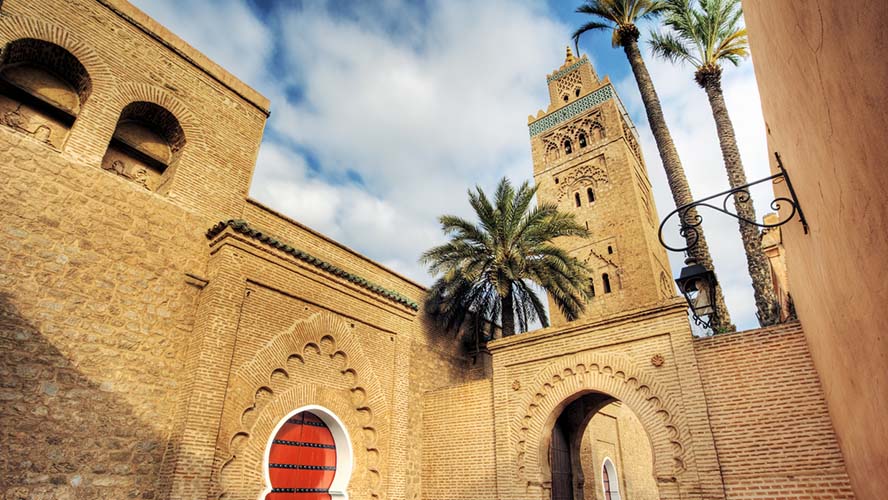
Fez, the cultural capital
Fez lies in the heart of Morocco, on the road that connects Rabat and Algiers, and is known as the country’s cultural capital. Fez was the governmental capital of Morocco on several occasions, between the 9th and 10th centuries, between 1244 and 1554, at several moments in the 17th century and between 1727 and 1912, when Rabat took over.
You’ll need two or three days to visit Fez because it’s a UNESCO World Heritage Site and has a wonderful legacy to discover. The main attraction is the Fes El Bali medina, a huge 9th century medieval neighbourhood that has a network of 9,000 streets where visitors frequently get lost. It’s the largest pedestrian area in the world.
Fez has countless other sights to see: the al-Qarawiyyin Mosque, the Al-Attarine Madrasa, the Royal Palace, the various souks, the city gates, fountains… Fez is also the best place to set off on a trip to the Merzouga Desert where you can spend the night in a tent.
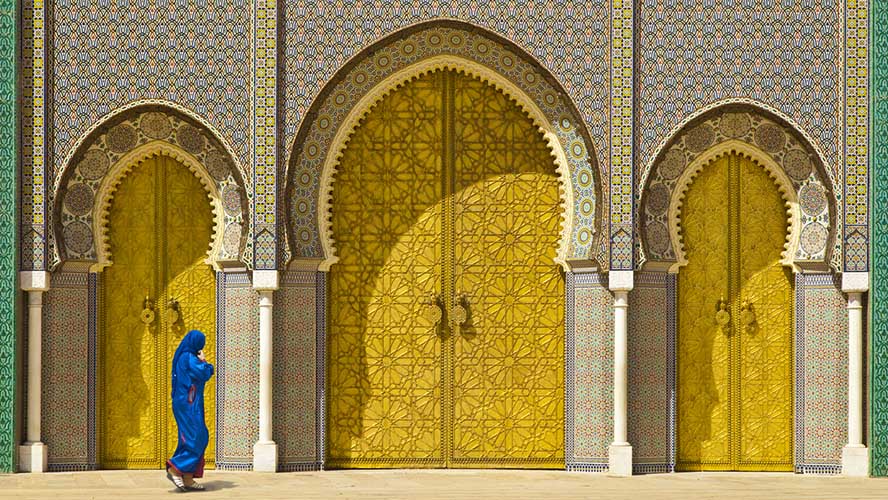
Meknes, the undiscovered beauty
Meknes is 60 km west of Fez on the way to Rabat. It was the capital between 1672 and 1727, and this period left an architectural and city planning legacy that easily merits its UNESCO World Heritage Site status. Moulay Ismail was responsible for the city’s period of splendour; he established the capital in Meknes and ordered it to be designed to his fancy, with 40 km of walls, palaces, and gates etc. The mausoleum containing the tomb of Ismail is also found here.
Meknes is also more peaceful than the other imperial cities. Its medina is far easier for visitors to navigate than those of Marrakesh and Fez. One attraction that always makes a big impact is Bab El Mansour Gate, which was built in 1732 and is considered to be one of the most beautiful in the world. Meknes will surprise you!
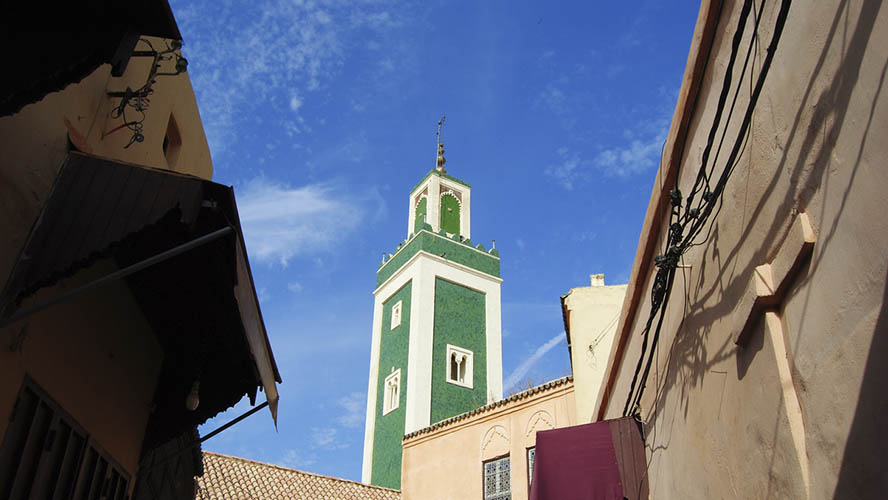
Rabat: the capital of Morocco
Rabat has been the capital of Morocco since 1912 when the French Protectorate of Morocco began. Even though it’s still the nation’s capital and sits on the Atlantic Ocean, Rabat is less touristy than the other imperial cities.
Rabat combines antiquity and modernity; its main monument is the Hassan Tower, a 12th century minaret that was built to be the tallest tower. Next to it is the Mausoleum of Mohammed V, a royal pantheon in white marble that houses the remains of Mohammed V and Hassan II, father of the current king. The Kasbah of the Udayas and the medina with its famous walls are also of particular interest to visitors to the Moroccan capital.
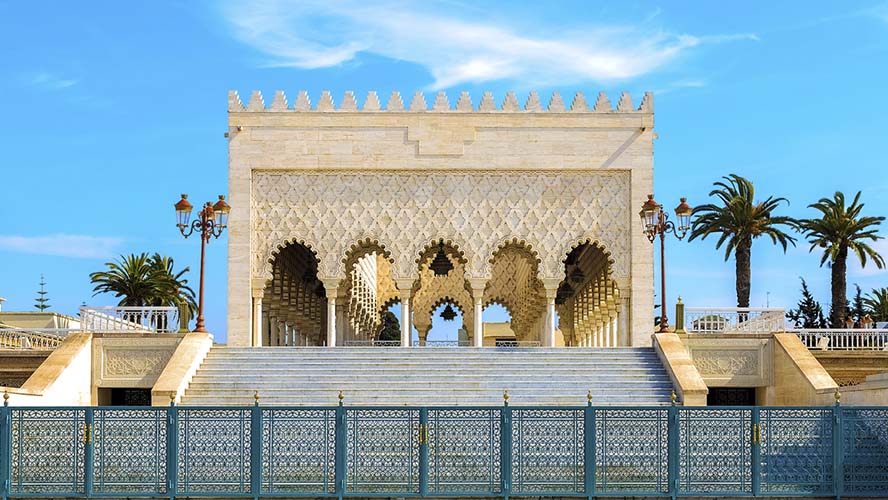
Hassan II Mosque in Casablanca
This is without question the most majestic mosque in Morocco. The Mosque of Hassan II in Casablanca makes a big impression thanks to its size – it’s the second largest in the world after the mosque in Mecca. Its minaret is 200 m tall and has a laser beam that points towards the holy city. The interior has a hall that can accommodate 20,000 worshippers and a sliding roof with views of the sky.
Casablanca Mosque (1993) is the only one in Morocco that lets in people who aren’t Muslims, making it a magnificent opportunity to discover such an important space for Islam. It also has an impressive location, right by the sea.
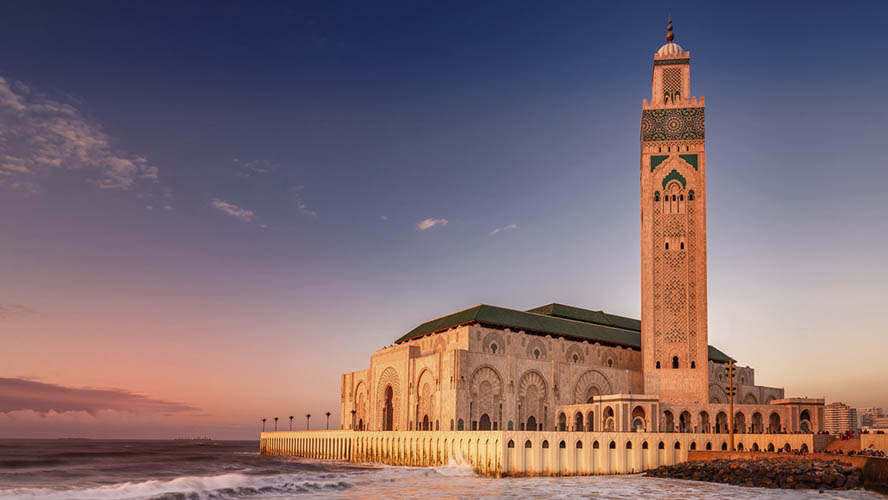
Tangier in the Strait of Gibraltar
Tangier is the most northern city in Morocco and therefore the closest to Europe. Located right on the Strait of Gibraltar, Tangier has been much sought-after throughout history, passing through the hands of various empires and European countries.
Its proximity to Spain and port, international airport and long coastline, have made Tangier a city that is popular with tourists and it has a multicultural vibe, thanks to its European past. Essential places to visit include the Grand Mosque, the medina, Place 9 du Avril, Cape Spartel and the Caves of Heracles.
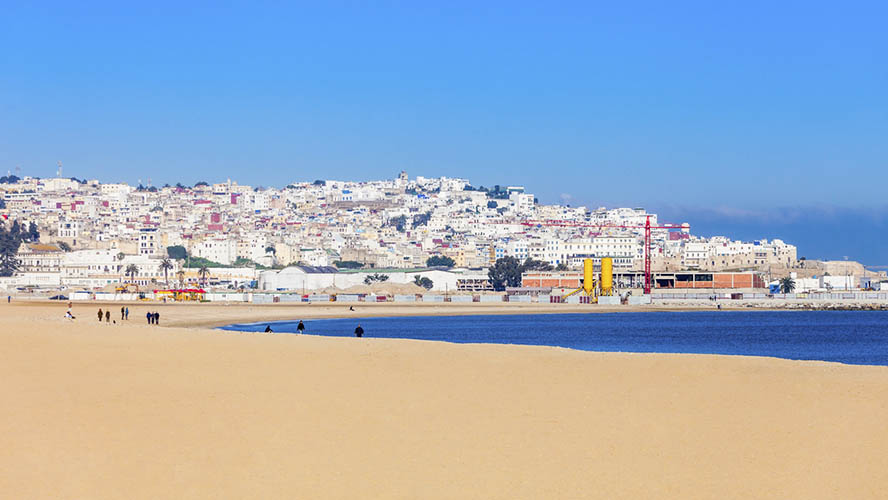
Ksar of Ait Ben Haddou
The ksar of Ait Ben Haddou is one of the most magical places in Morocco A ksar is a type of fortified city typical to the south of the country. The interior of Ait Ben Haddou hides labyrinthine streets and buildings made of traditional materials such as adobe, wood and straw. The city is also a screen icon because scenes from countless films and series have been filmed here, including Lawrence of Arabia, Gladiator and Game of Thrones.
Passing by the ksar of Ait Ben Haddou is also great if you’d like to follow some of the best-known routes in the country, such as the Route of a Thousand Kasbahs, which takes you to see traditional Moroccan adobe buildings commonly found in this area.
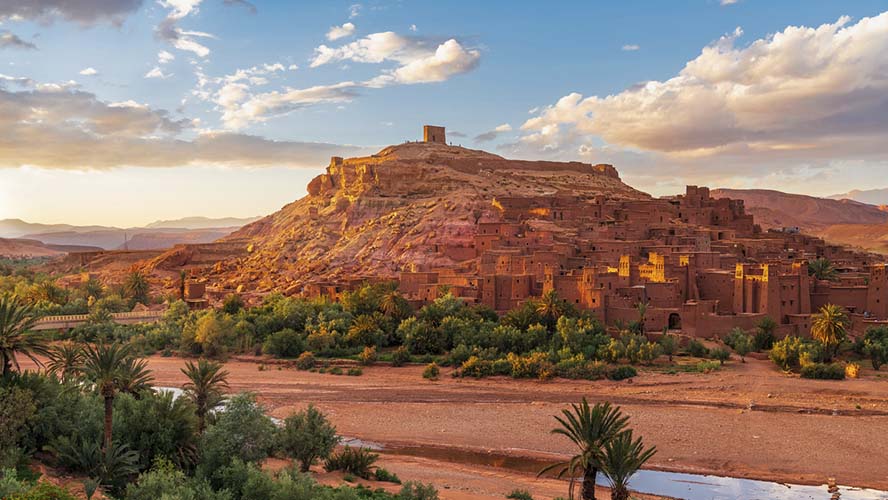
Zagora and Merzouga Deserts
Going on a trip to the desert, and sleeping overnight there, are two activities that all visitors to Morocco should add to their wish list. You don’t have to travel to the distant Sahara – there are two easier options that let you experience the sands right from Marrakesh: the Zagora and Merzouga deserts.
The Zagora Desert is around 360 km from Marrakesh and is a rockier area. In turn, the Merzouga Desert is 560 km from Marrakesh and has large dunes, some of which are over 150 m high. As it’s further away, Merzouga is a three-day trip once you factor in the journey time and spending the night there. As well as sleeping in the desert, both locations offer you the chance to go on a camel ride or go quad biking.
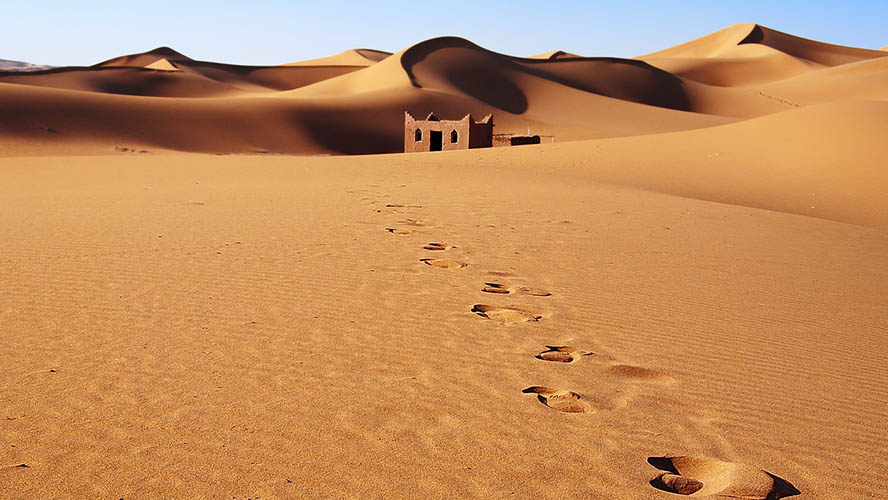
Chefchaouen, Morocco’s blue pearl
Located in the northern part of Morocco, in the foothills of the Rif Mountains, the streets of the small city of Chefchaouen still have their medieval layout. This town belonged to the Spanish Protectorate of Morocco and some of its inhabitants speak Spanish.
Chefchaouen has earned itself the nickname ‘the blue pearl’ of Morocco, thanks to its blue houses and enchanting medina, which make the town supremely picturesque,
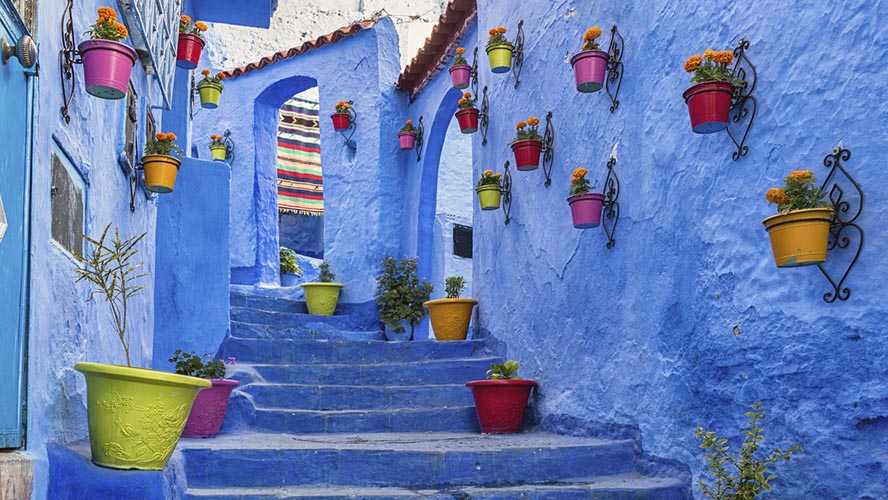
Essaouira, a surfing mecca
Essaouira is a historic Atlantic port that is famous today for being a windsurfing mecca thanks to its majestic beaches. The city also retains its historic legacy and charming port, with a lovely medina that is far more relaxed than those you’ll find in the big cities.
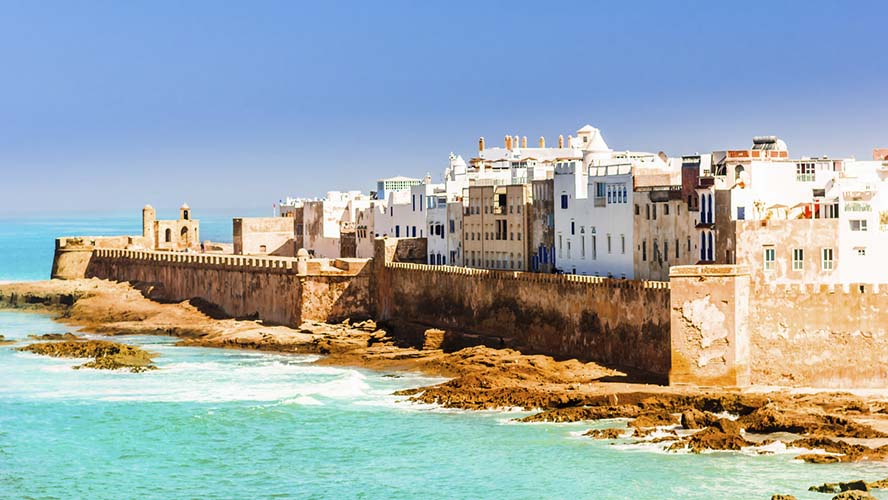
Ouzoud Falls
A magical place awaits you close to Marrakesh: a series of spectacular waterfalls that drop over 100 m bring life to this area of the High Atlas. The Ouzoud Falls are the highest in North Africa and are a spectacle of water and sound that captivates visitors who come here. You can also swim in the river, a great relief in the hot summer months.
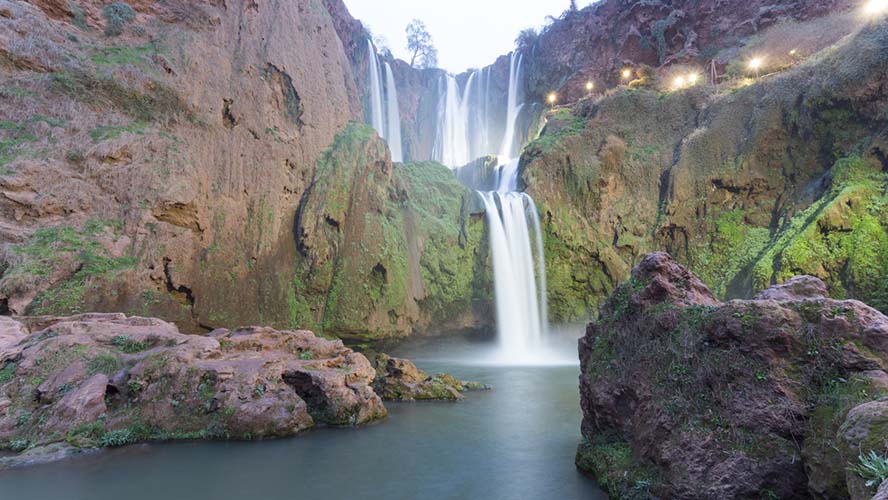
The ancient Roman city of Volubilis
Morocco’s historic legacy is so extensive that it’s even possible to see important Roman remains. The most famous site is Volubilis, an ancient Roman city that is 20 km north of Meknes; it was made a UNESCO World Heritage Site in 1997.
Although half of the site has yet to be excavated, what has been unearthed of the ruins of Volubilis include the remains of the forum, the thermal baths, the Temple of Jupiter, the spectacular Arch of Caracalla and the impressive mosaics, the jewel of this ancient city.
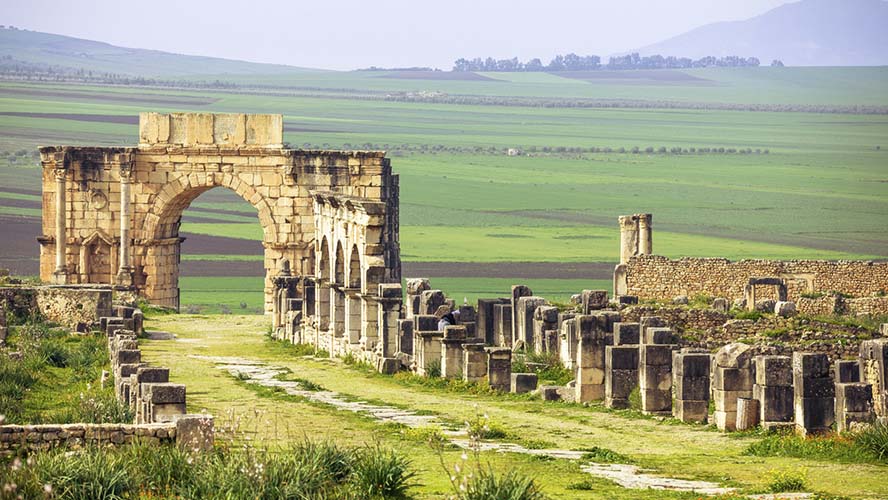
Todra and Dades gorges
Two more magical places that can be visited from Marrakesh are the Todra and Dades gorges (internal link). Both are found amid the most spectacular landscapes in Morocco and consist of breaches that split the High Atlas, creating two impressive valleys with vertical walls that soar dozens of metres high. What’s more, the Dades Gorge has one of those vertigo-inspiring roads with winding curves that are loved by driving enthusiasts.
If this introduction to Morocco has piqued your interest, read our other posts about travelling to this wonderful country of the Alaouites: recommendations when travelling to Morocco, what to buy, what to eat and many more.
